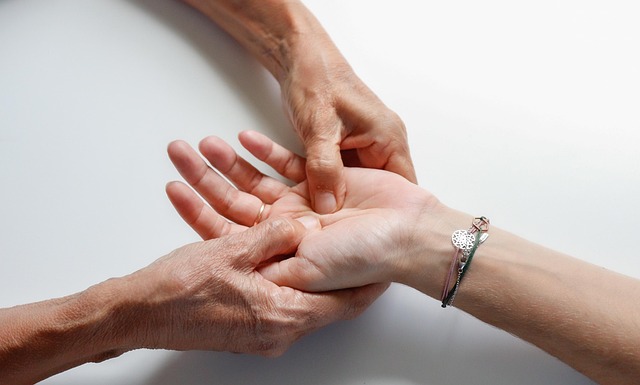Stress and anxiety are normal reactions but can become overwhelming, indicating an anxiety disorder. Early recognition of symptoms like excessive worry, panic attacks, and sleep disturbances is crucial for effective anxiety treatment. Therapy offers support, helping individuals understand their condition, challenge negative thoughts, and develop coping strategies. Cognitive Behavioral Therapy (CBT) identifies and modifies cognitive distortions, mindfulness techniques promote calmness, and exposure therapy desensitizes fears. Support networks and lifestyle changes, including diet and exercise, are integral to holistic anxiety treatment.
Stress and anxiety disorders are prevalent mental health challenges affecting individuals across various demographics. In this comprehensive guide, we explore effective anxiety treatment strategies that empower you to manage and overcome these conditions. From understanding common types and symptoms to discovering powerful therapeutic approaches like CBT and ACT, this article equips you with tools for navigating stress and anxiety. Learn about practical mindfulness techniques, the importance of support networks, and lifestyle changes for enhanced mental well-being.
Understanding Stress and Anxiety Disorders: Common Types and Symptoms

Stress and anxiety are normal responses to challenging situations, but when they become overwhelming and persistent, it may indicate an underlying disorder. Understanding these conditions is the first step towards effective anxiety treatment. Common types include Generalized Anxiety Disorder (GAD), characterized by excessive and uncontrollable worry about various aspects of life; Panic Disorder, marked by recurrent unexpected panic attacks; and Social Anxiety Disorder, which involves intense fear and avoidance of social situations.
Symptoms can vary but often include restlessness, fatigue, muscle tension, difficulty concentrating, irritability, sleep disturbances, and in severe cases, physical manifestations like rapid heartbeat and chest pain. Recognizing these signs is crucial as early intervention through anxiety treatment can significantly improve outcomes.
The Power of Therapy: A Safe Space to Process and Heal

Therapy offers a safe and supportive environment where individuals can confront and process their stress and anxiety openly. This process allows for deeper understanding of the root causes, triggers, and patterns associated with these emotions. Through therapy, people gain valuable tools and coping mechanisms tailored to their unique needs. By exploring thoughts, feelings, and behaviors in a non-judgmental space, individuals can heal, grow, and develop resilience against anxiety’s grip.
Effective therapy sessions empower clients to challenge negative thought cycles, learn relaxation techniques, and build healthier relationships with themselves and others. This transformative journey fosters self-awareness, enhances emotional intelligence, and provides long-lasting strategies for managing stress and anxiety in everyday life. With the right support, individuals can reclaim their well-being and live more fulfilling lives free from the burden of excessive worry and fear.
Cognitive Behavioral Therapy (CBT): Unraveling Negative Thought Patterns

Cognitive Behavioral Therapy (CBT) is a highly effective approach in the arsenal of anxiety treatment. It focuses on identifying and challenging negative thought patterns that contribute to stress and anxiety. By modifying these cognitive distortions, individuals can gain a more balanced perspective, leading to reduced anxiety symptoms. CBT encourages patients to question and replace irrational thoughts with realistic ones, fostering a healthier mental state.
Through structured conversations with a trained therapist, individuals learn to recognize triggers and unhelpful thinking habits. This process enables them to develop coping strategies tailored to their unique needs. CBT provides practical tools to manage anxiety in various situations, empowering individuals to take control of their emotional well-being and lead more fulfilling lives.
Mindfulness and Relaxation Techniques for Daily Calmness

Mindfulness and relaxation techniques are powerful tools in the daily management of stress and anxiety. These practices encourage individuals to focus on the present moment, calm their minds, and reduce the impact of stressful thoughts. One effective method is deep breathing exercises, which involve slow, controlled inhales and exhales, helping to activate the body’s natural relaxation response.
Additionally, mindfulness meditation allows folks to observe their thoughts without judgment, fostering a sense of detachment from anxious or stressful feelings. Regular practice can enhance emotional resilience, making it an integral part of anxiety treatment. These simple yet profound techniques offer accessible ways to cultivate daily calmness and improve overall well-being.
Exploring Different Therapies: From Exposure Therapy to Acceptance and Commitment Therapy (ACT)

When it comes to managing stress and anxiety, a multitude of therapeutic approaches exist, each with its unique benefits. Exposure therapy is a popular method that involves gradually confronting fears in a safe environment to reduce anxiety over time. This therapy empowers individuals to face their stressors directly, desensitizing them and fostering a sense of control. On the other hand, Acceptance and Commitment Therapy (ACT) encourages acceptance of negative emotions while promoting commitment to personal values and goals. ACT helps individuals change their relationship with thoughts and feelings, reducing the impact of anxiety and enabling them to live more fulfilling lives.
These therapies offer distinct yet effective ways to tackle anxiety treatment. Exposure therapy focuses on changing behaviors and reactions to stressors, while ACT emphasizes cognitive processes and value-driven actions. Both approaches have strong evidence supporting their effectiveness in managing stress and anxiety disorders, providing individuals with valuable tools to navigate their mental health journeys.
Building a Supportive Network: The Role of Family, Friends, and Support Groups

Building a strong support network is an integral part of managing and overcoming stress and anxiety. Family and friends can play a pivotal role in providing emotional support, understanding, and practical help during challenging times. Open communication with loved ones allows individuals to express their feelings and concerns, fostering a sense of belonging and reducing the burden of anxiety.
Support groups are another valuable resource for anxiety treatment. Connecting with others who share similar experiences provides a safe space to discuss struggles, exchange coping strategies, and gain different perspectives. These groups offer a sense of community, helping individuals feel less alone in their journey towards managing and overcoming anxiety.
Lifestyle Changes for Better Mental Health: Nutrition, Exercise, and Sleep Hygiene

In the quest for effective anxiety treatment, lifestyle changes often form a cornerstone of holistic mental health management. Nutrition plays a significant role; incorporating foods rich in omega-3 fatty acids, vitamins B and D, and magnesium can help regulate mood and reduce inflammation in the brain. A balanced diet, free from excessive sugar and processed foods, supports overall well-being and can lessen anxiety symptoms over time.
Regular physical activity is another powerful tool in the fight against anxiety. Exercise releases endorphins, often referred to as ‘feel-good’ hormones, which promote relaxation and improve mood. Whether it’s a daily walk, yoga practice, or intense workout, engaging in physical activities can provide an outlet for stress, enhance mental clarity, and offer a much-needed break from anxious thoughts. Moreover, prioritizing sleep hygiene is essential; aiming for 7-9 hours of quality sleep each night allows the body to rest, repair, and regulate hormones, all of which contribute to better anxiety management.
